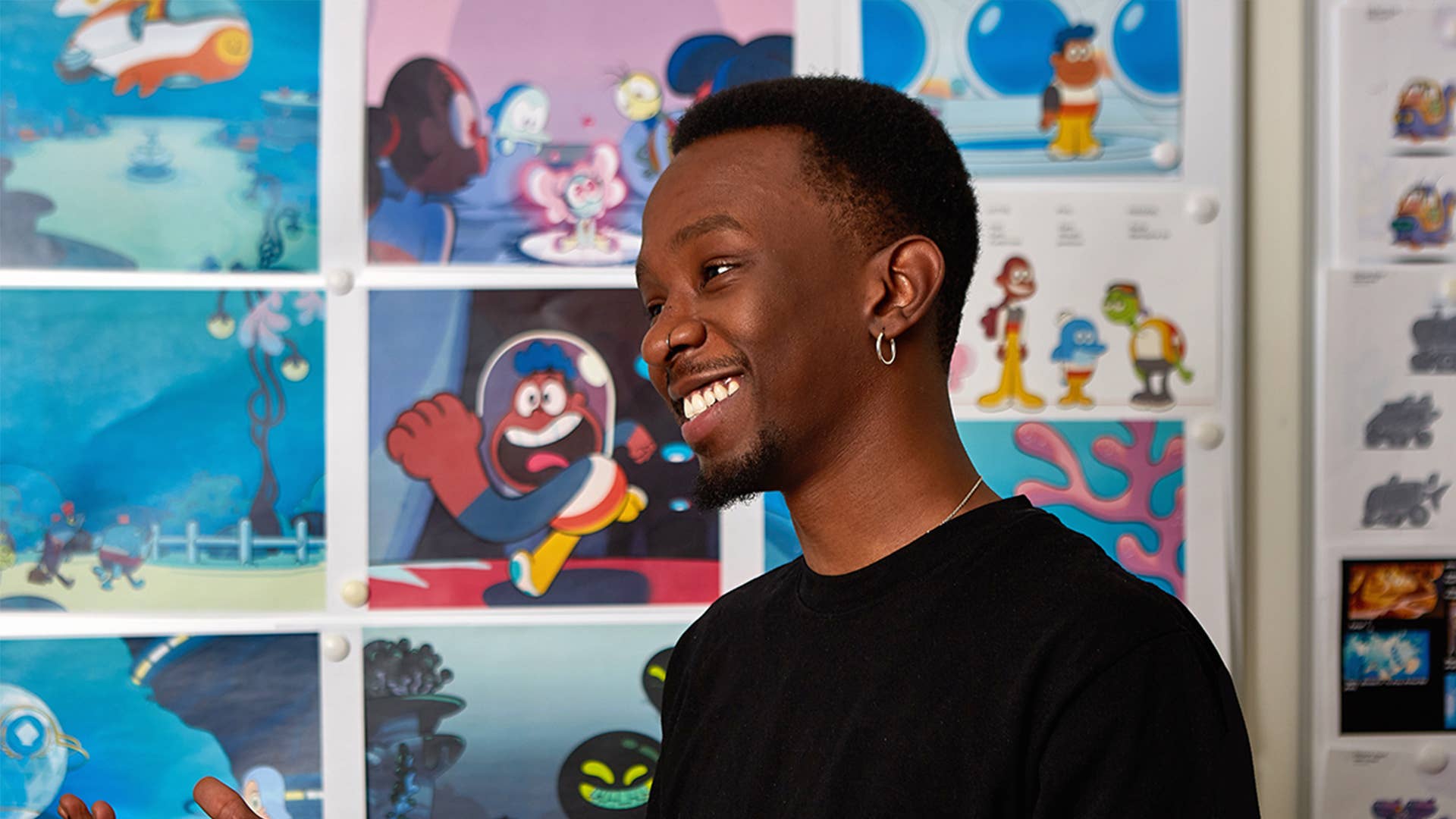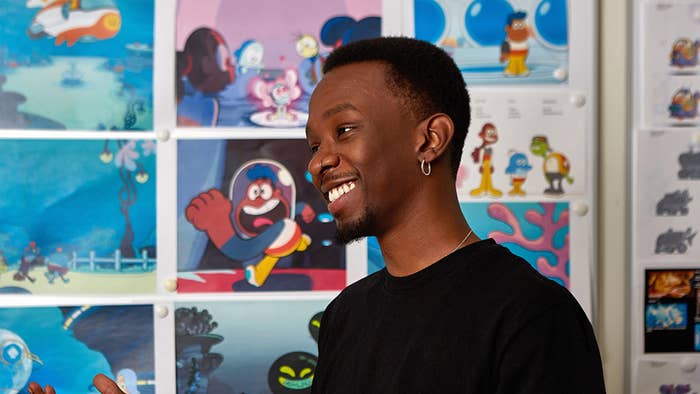
Gyimah Gariba has dreamed about creating his own animated TV show for as long as he can remember. From the first time he watched a cartoon, Gariba understood that better realities were possible, if only you had the courage and imagination to manifest them.
After moving from Accra, Ghana to Toronto, Canada at 18 years old to study animation at Sheridan College, Gariba’s career took many twists and turns: From interning at Titmouse Animation Studios in Los Angeles and working on Black Dynomite, to getting a job at Guru Studios in Toronto and working on popular Canadian children’s shows including Paw Patrol, to his side hustle as an illustrator and draftsman—where he has worked on impactful corporate campaigns and auctioned off drawings to raise money for LGBTQ issues—the desire to create his own animated children’s TV show has always been in the back of his mind.
“My whole life, ever since I was a kid, it just seemed normal,” Gariba tells Complex. “Like, there’s a specific trajectory, especially with children’s television animation directors… there’s a pace that I saw growing up [that I wanted to follow].”
The 29-year-old, who was named one of “15 Young African Creatives Rebranding Africa” by Forbes in 2015, explained how some of his biggest influences in animation started in children’s TV before moving on to adult series’ and eventually feature films. Take Russian-American animator Genndy Tartakovsky, for example, who began his career creating Dexter’s Laboratory before making Samurai Jack and eventually directing movies such as Hotel Transylvania. Or Craig McCracken, the American who created The Powerpuff Girls and then Foster’s Home for Imaginary Friends and now works on Kid Cosmic on Netflix.
Gariba is following in their footsteps as the creator and illustrator of Big Blue, his debut TV show that premiered on CBC Kids this month. After six years of working on the show with the internal department at Guru Studios, Gariba’s lifelong dream has finally become a reality.
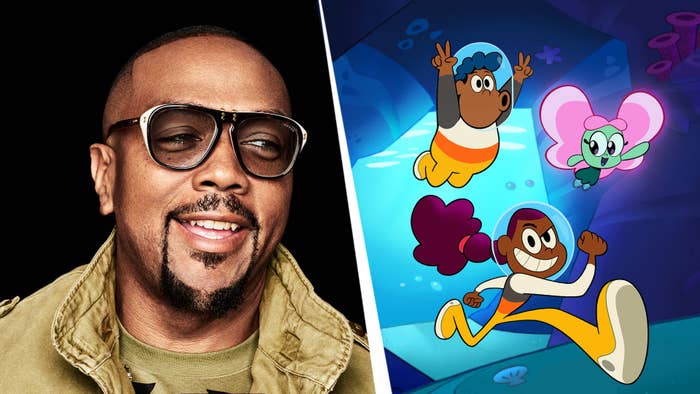
Big Blue is an animated sci-fi show for children aged 5 to 9 that follows a crew of youngsters aboard a submarine who are there to save the underwater planet and protect its wacky residents. Their aquatic adventures teach them about teamwork, family, and protecting Planet Earth and each other, exploring the natural and mythological wonders of the ocean along the way. It’s quirky, funny, engaging, scientific and, with a theme song produced by Timbaland—who has always loved animation and called this a “passion project”—Big Blue has something for everyone.
“I had heard of Gariba prior to the project, but I learned even more after working on this,” Timbaland tells us. “What’s great about him is he’s not just animating: he is using his animations to draw attention to important issues that we and future generations need to be educated on and fight for.”
Gariba is a dreamer and an animator, and those two things can be a very powerful combination in the right hands. Sure, Big Blue is a silly children’s show full of fart jokes and sibling rivalries, but it’s also about what it would take to improve our reality and live in a better world, focusing on themes such as representation, fun, care, tenderness, and love for each other and our planet.
“I was like: OK, who am I gonna go on this adventure with? It sure as hell isn’t gonna be the same type of characters [we’ve seen]. Like, I get a chance to do something, I’m gonna reach back in time and give myself the coolest characters, you know what I mean?” Gariba said, acknowledging that it’s rare to see Black characters in sci-fi and children’s TV, making the two main characters Black.
“Back in the day when I was playing pretend Dragon Ball, I didn’t get to be Goku ever. Because I’m not blond, you know? Like, I’m never the guy. This was a chance to be like, okay fuck it, we are the guy. Except it’s we in the broader sense.”
“I’ve already seen a significant change from global warming in my lifetime, so I wanted to do my part to help teach and inspire kids to do their best to take care of our planet.” – Timbaland
Gariba remembers growing up in Ghana and only getting to watch select North American cartoons that were broadcast on Nickelodeon UK. While he admits that it is rare to see Black characters in animation, what’s even more disturbing to him is the way they are usually portrayed.
“What I’ve come to realize now just studying animation is that it’s more about caricature, you know? Like, I always had the sense that someone was making fun of me when a Black character was present. It took a very specific kind of design for me not to feel offended,” Gariba says.
“Going back to Dragon Ball: that was just a caricature. It’s like a weird version of a Black person they were doing. And I didn’t want to be that, you know?”
As a Black man himself, it wasn’t necessarily difficult to come up with realistic characters for the show. But to make them especially charming and relatable, Gariba based the crew around his friends and family: Lettie is the confident captain of the ship who is looked up to by the crew and empowers them. She’s based on Gariba’s older sister who always knew the coolest kids, the best music, and protected Gariba growing up, because no one was going to mess with Lettie’s brother; Lemo is Lettie’s little brother in the show, a Boy Genius type of character with tons of creative ideas, based on Gariba’s big brother; Bacon Berry is the ferry of the underworld, based on Gariba’s younger sibling; and Freddie the Turtle is based on Garbiba’s close friend and fellow artist Freddy Carrasco.
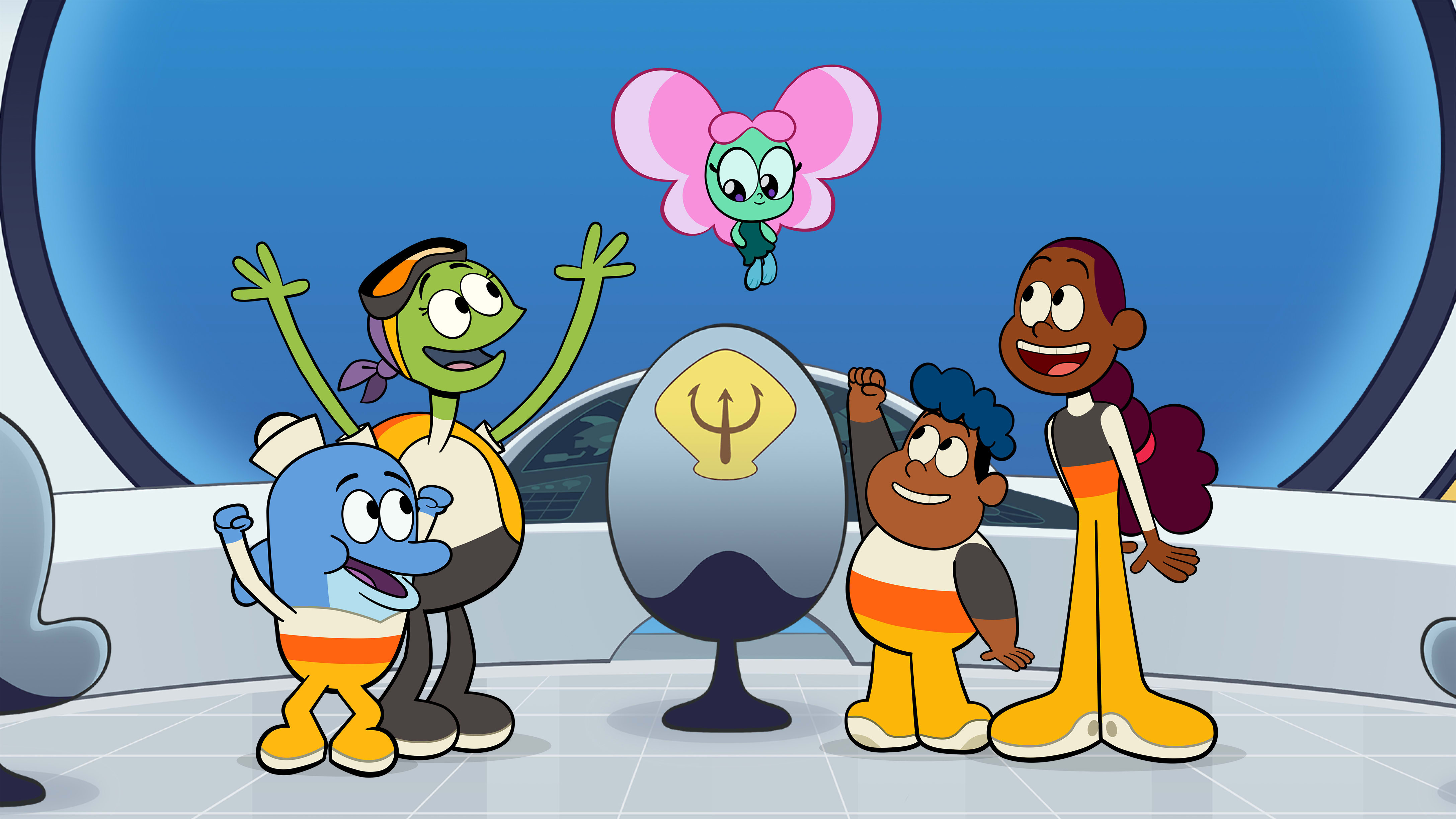
“I was bored of seeing versions of dynamics that I have already seen; there’s a lot of reboots now. And I’m like, OK, I know what it is, I know what the math does. I know what Friends is. I know what different combinations of things are and I don’t want a new version of it,” Gariba said about the dynamic between his characters.
“I wanted a new combination of flavours. And that’s what was more interesting to me.”
One of the things that makes the crew of characters unique is Bacon Berry, a mythological ferry of the underworld with magical powers and, more importantly, a mostly non-verbal character voiced by 2-year-old actress, Tianna Macduff. By having a non-verbal main character, Gariba and director Riccardo Durante were forced to push an extra amount in order to keep young viewers engaged and entertained and ensure they actually watch the show rather than only kinda paying attention to it while multitasking, because “if you’re not watching it, you’re not gonna get it. You’re not gonna know she’s there,” Gariba explains.
“I would just like people to think about caring about the planet in terms of care: There’s a kind of tenderness and the kind of urgency you can apply to the people in your life that you love and care about… Keep that same energy with the spaces you occupy.”
It all goes back to what Gariba enjoys about creating children’s TV in the first place: the challenge. How do you communicate with children all over the world in simple yet effective terms?
“What I like about the children’s space is that it kind of forces you to tell [a good joke]. Like if you’re not funny, you’re not funny: There’s no amount of vulgarity that’ll make you funny, right? It’s about timing. You have to be funny and you can’t be vulgar. Simple, simple rules,” Gariba explains.
“You can’t offend anybody. You can’t be violent. You can’t be vulgar. Are you still funny? It’s a fun test, but it’s also what’s hard about it… making children laugh: What a skill. Because they don’t always have language, you don’t want to be vulgar, you don’t want to be violent. So, [to pull it off], that’s a gift. That’s communication.”
It’s one thing to be funny and it’s another to do it while also touching on serious themes such as climate change and protecting the planet, a balance that Big Blue manages to strike.
“To be honest, I’ve never been a very politically-charged person… However, story-wise something I kept thinking about and even at the time when it was pitched—this is like four or five years ago—weird shit was happening to the planet. I think that was when black sludge was being found all over. Remember? There were all these weird eruptions of just like, unidentified shit, you know? And it just felt weird what everyone was prioritizing in the world at the time,” Gariba said about his decision to make a show about protecting planet earth.
For Grammy-winning producer Timbaland, the show’s focus on protecting the planet was a big reason he wanted to participate in the project, saying: “I’ve already seen a significant change from global warming in my lifetime, so I wanted to do my part to help teach and inspire kids to do their best to take care of our planet.”
But Gariba is insistent that Big Blue is not about “climate change.” Rather, it’s about re-framing the way we see the planet and our impact on it, because to get caught up in the jargon and bureaucracy is not only too complicated for kids to understand, it’s pointless for any of us.
“I feel like calling it climate change is weird: it’s just about caring about the planet,” Gariba says. “And honestly, I don’t have to make anything for that to happen: Everybody already cares about the planet. People just think about it in different ways. And I would just like people to think about caring about the planet in terms of care: There’s a kind of tenderness and the kind of urgency you can apply to the people in your life that you love and care about… Keep that same energy with the spaces you occupy.”
“I feel like I fucking dreamed myself here. I was like: Wouldn’t it be cool if I made a cartoon?”
“I think the question is just more about reminding people that I don’t care about climate change: I care about the planet. Like, I don’t care what you name it right now. I care about this thing,” Gariba says as he gestures to the space around us. “And I think when people try to disperse names on things like that, we get caught up in bureaucracy. Like COP26, for example, we’ll sign something 10 years from now. But postponing care is deluded.”
The idea that we can fundamentally change the way we think about the planet through the next generation might sound unrealistic to some, but that is exactly what makes Gariba and Big Blue so special: in order to change our reality, we have to dream big. And Gariba has manifested a career in animation and a fantasy world in Big Blue through his own ability to dream.
“Dreaming can just be letting yourself be hyperbolic about the outcome, you know? Like, in real life, I feel like I fucking dreamed myself here. I was like: Wouldn’t it be cool if I made a cartoon? You wake up one morning you go to the some lady named Rachel Marcus—vice president of creative development at Guru Studios—and be like, ‘Yo, I’ll fucking do it,’” Gariba says.
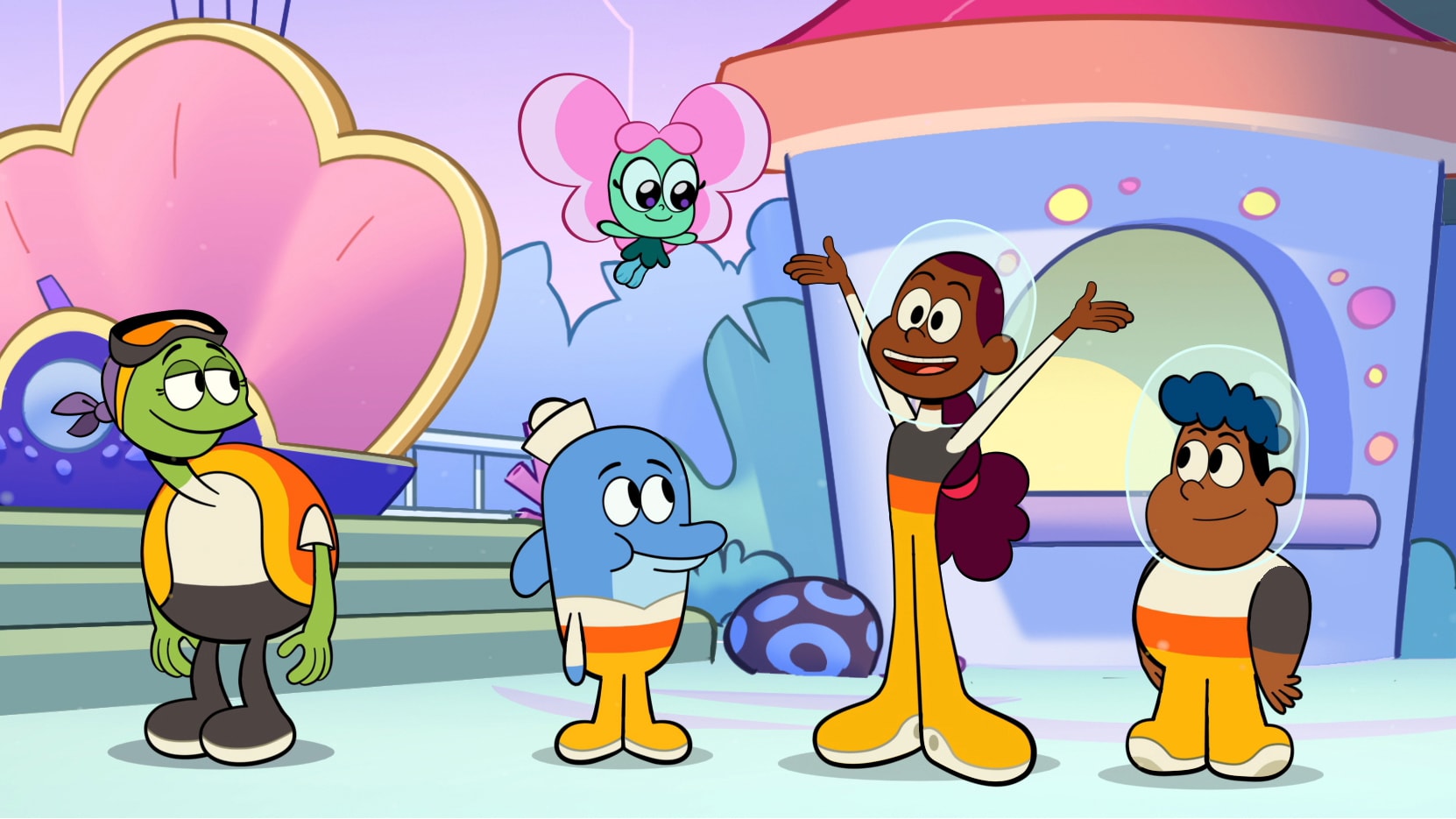
“I’m talking about not leaving this world, but actually demanding to participate in it however you want… Dreaming in that sense of: actually step into your life, you know? Shake shit up in your life. That’s dreaming. Don’t tap out. That’s dark, right? That’s escaping. I’m talking about dreaming.”
Gariba is just like any kid who sat in class daydreaming about fantasy worlds, only he has actually turned one of his into an animated TV show. Still, he feels like he’s living in a fever dream when the voice actors say the name of their characters, who happen to be the real names of his siblings and friends. As someone who grew up listening to Timbaland and Magoo and Missy Elliott, he feels that sense of unreality when he listens to the Timbaland-produced theme song for Big Blue, because it’s a connection that feels beyond even his wildest dreams, but like many things in his life, it’s one that came to fruition because of his ability to push for it.
“Again, going back to dreaming, the process of doing it requires you to believe that it could be a thing, you know? And that has pushed me to demand certain things of my reality even if it doesn’t feel natural to me,” Gariba says.
“So, having heard Timbaland all of my childhood, as soon as that was brought up in the conversation, dreaming about working on a cartoon in the first place… knowing where I’m coming from, I was like: Nah, I actually have to push for it and ask. It just meant a lot. It meant a lot.”
And perhaps most amazing of all, Gariba gets that fever dream feeling when he thinks about all the kids that will be able to watch Big Blue. In addition to CBC Kids and Radio Canada, ABC Me in Australia, CTC Kids in Russia, and NRK in Norway are also broadcasting the show. And even more recently, another broadcaster joined the show; one Gariba has a personal connection to: Nickelodeon UK.
Growing up in Ghana meant only having access to select North American cartoons that were broadcast on Nickelodeon UK, and their deal to broadcast the show will enable children all over the world to watch Big Blue, including in Gariba’s native country of Ghana.
“I feel like basically if I was a kid today, I could catch my show,” Gariba says with a big smile wiped across his face. “Like, that’s sick… that’s pretty crazy.”

